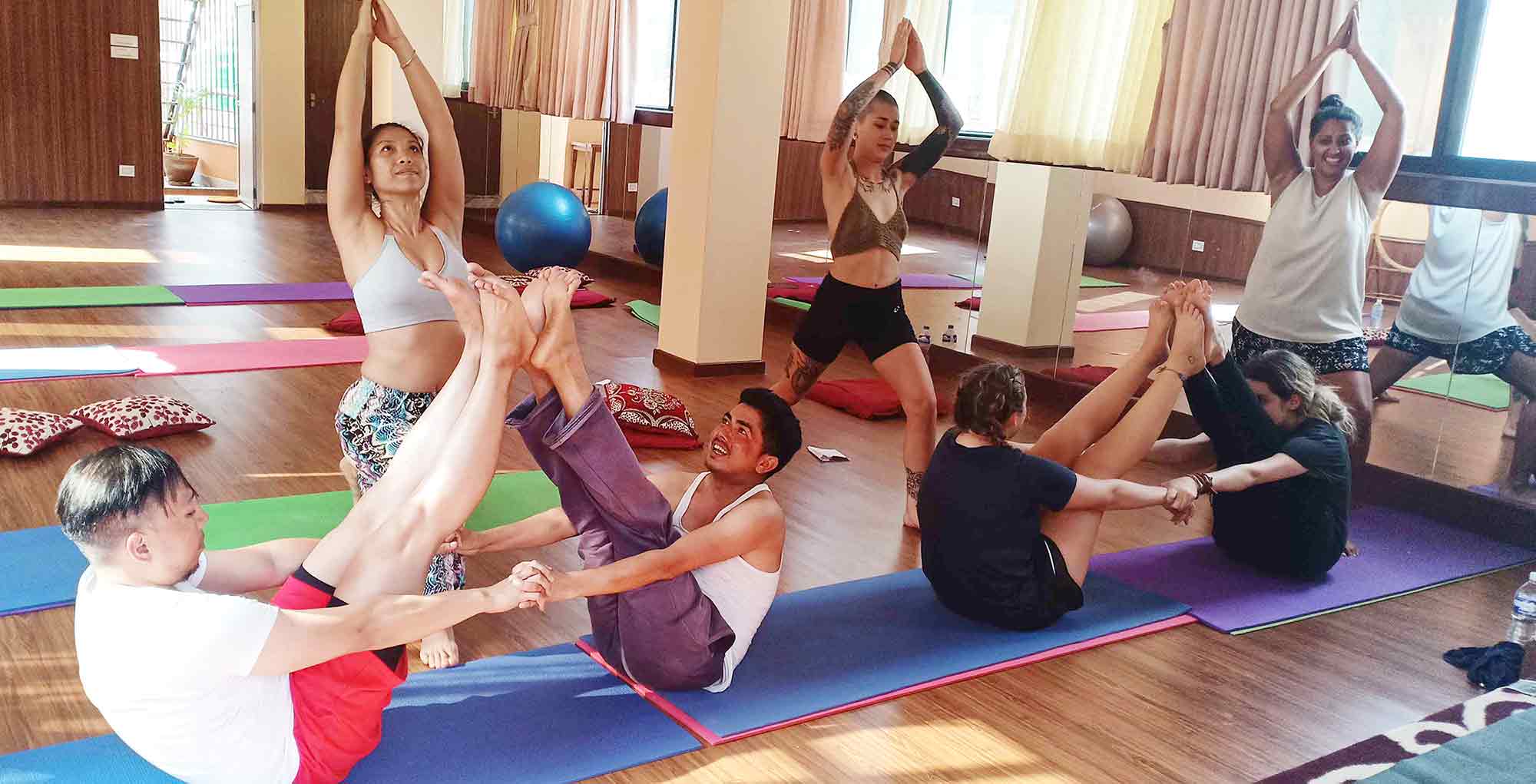
15 Sep 2020 HYN Himalayan Yoga Academy
IS IT YOGA, YOGAA, OR EXERCISE, OR BEYOND THAT? Let’s go deeper and understand it through this insightful article. Yoga is usually a union. Its meaning and knowledge are very wide. Yoga is a spiritual element of the universe. This is the result of the creation and existence of the universe. The law of origin of celestial bodies is yoga. One body with another body, one element with energy, one object with another substance, whatever came into existence as one, becomes one, bound in one formula, which forms Yoga. Therefore, we also take care of the effect or energy position of yoga in the planetary constellation. More about IS IT YOGA, YOGAA, OR EXERCISE?
If the union of body, mind, and soul is Yoga, the process of union is action. Soul is the conscious energy within the element or organism, and Parmatma is the cosmic conscious energy, which is active as ॐ = A + U + M. This is yoga. As a result, the cycle of creation (सृष्टि/जन्म); / birth; condition / life (स्थिति/जीवन) and disaster / death (प्रलय/मृत्यु) continues. The existence of every creation is cosmic energy. In the Panch Mahabhuta, the subtle form of the Aakaasha/Sky element is the word or sound or vibration (शब्द वा ध्वनि). From this sound came the complete Panchatattva, that is, all things. The union of words or a sound with the sky is yoga. The union of the Pancha tattva of nature is Yoga.
What Veda Says ?
According to Vedic or Sanatan doctrine, the power of creation, operation, and destruction was later considered to be the supreme unseen power. And later Puranic or Hindu doctrine got the likeness of the God-Trimurti as Gods- Brahma, Vishnu, and Maheshwara. Therefore, if the universe is a physical sky, then Om (Omkar) is energy. OMKAARA is the first universal name of God/ Supreme Power. This is Yoga
In ancient times, chanting, recitation (Japa), Tapa (penance), Sadhana, Upavasa (Fasting), Dhyana (meditation) were the means of the self-realization of spiritual/divine power, salvation, and the state of spiritual discipline was obtained, which was considered Yoga. This state of spiritual consciousness was understood based on the scriptures as Yoga itself, as samadhi, moksha, mukti, nirvana, and kaivalya. Based on the essence of yoga, Samadhi is also a partial path of Yoga, and through many Samadhi Paths, one reaches the state of Yoga, i.e., Kaivalya.
Veda Vyasa commented that “Yoga: Samadhi” means that yoga is samadhi and samadhi is yoga. Samadhi is also a part of Yoga. All the means, actions within the yoga make all realize the four elements of yoga. Such as Hey, Heyhetu, Han, and Hanopaya, for realizing the life, the universe, and the spiritual element, and for solving the problem.
The word ‘heya’ is a part of the fourfold system:
Heya: which is to be eliminated (suffering or duhkha)
Heya-hetu: cause of the pain
Heya-hana: process of eliminating the suffering
Hana-upaya: the means for eliminating the sufferings
Discussion on threefold Suffering (Duhkhatraya)
There are innumerable kinds of duhkha as one object that gives me pain may give pleasure to someone else. However, our sages have classified all kinds of pain under three heads:
Adhyatmika Duhkha (Intra-organic caused by oneself due to ignorance).
Adhibhautika Duhkha (Extra-organic caused by fellow beings or other creatures)
Adhidaivika Duhkha (Supernatural caused by natural calamities)
Maharishi Patanjali defines yoga in the philosophy of yoga as “Yogashchittavrittini Nirodh: 1. 2, that is, Yoga is to stop the many kinds of fired thoughts that arise in the mind. In the first stage, 24 to 40 thoughts come to the mind in a second, purifying and positive, and Yoga is the state of restraint as the moment decreases and travels towards the eternal emptiness. Now, whatever path we take, whether it is the path of Knowledge, Devotion, Karma, Hatha, Mantra, Tantra, Laya (Rhythm), Raj, or Meditation, or Ashtanga Yoga, Reaching the state or void state is yoga. In the Patanjali Yoga Sutra, a formulaic garland of cosmic truth is woven, meaning that yoga is the realization of actions, the attainment of truth from the various means.
From the gods and goddesses of ancient times (Pre-Vedic Period) to the sages of different periods, the Maharishis, who prepared the Vedas, the Upanishads, the Upavedas, and the philosophies (Orthodox), were all yogis. Shiva, Rama, Krishna, Janak, Buddha, Mahavira, Jesus, Ashtavakra, Kapila, Machhendranath, Gorakhanath, etc., were yogis. Did they participate in the Olympics, jump and exercise, and fly in the air without asanas, meditate without breathing norms? Why did Buddha talk about Panchsheel? The five sub-rules within the Buddha’s Panchasheel and Yoga’s Yama are Ahimsa, Satya, Asteya, Natural attitudes, and Aparigraha, etc., which are the rules that the yogi must first understand and follow. Similarly, the by-laws (NIyama) of the rules are also basic and the foundation of sadhanas.
